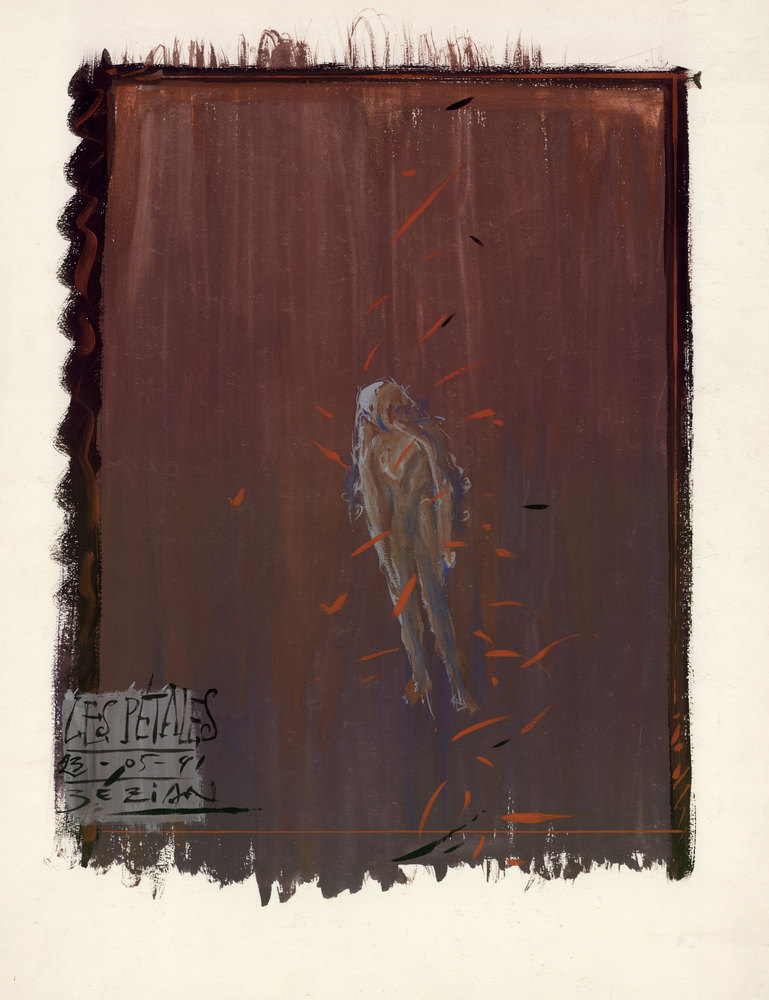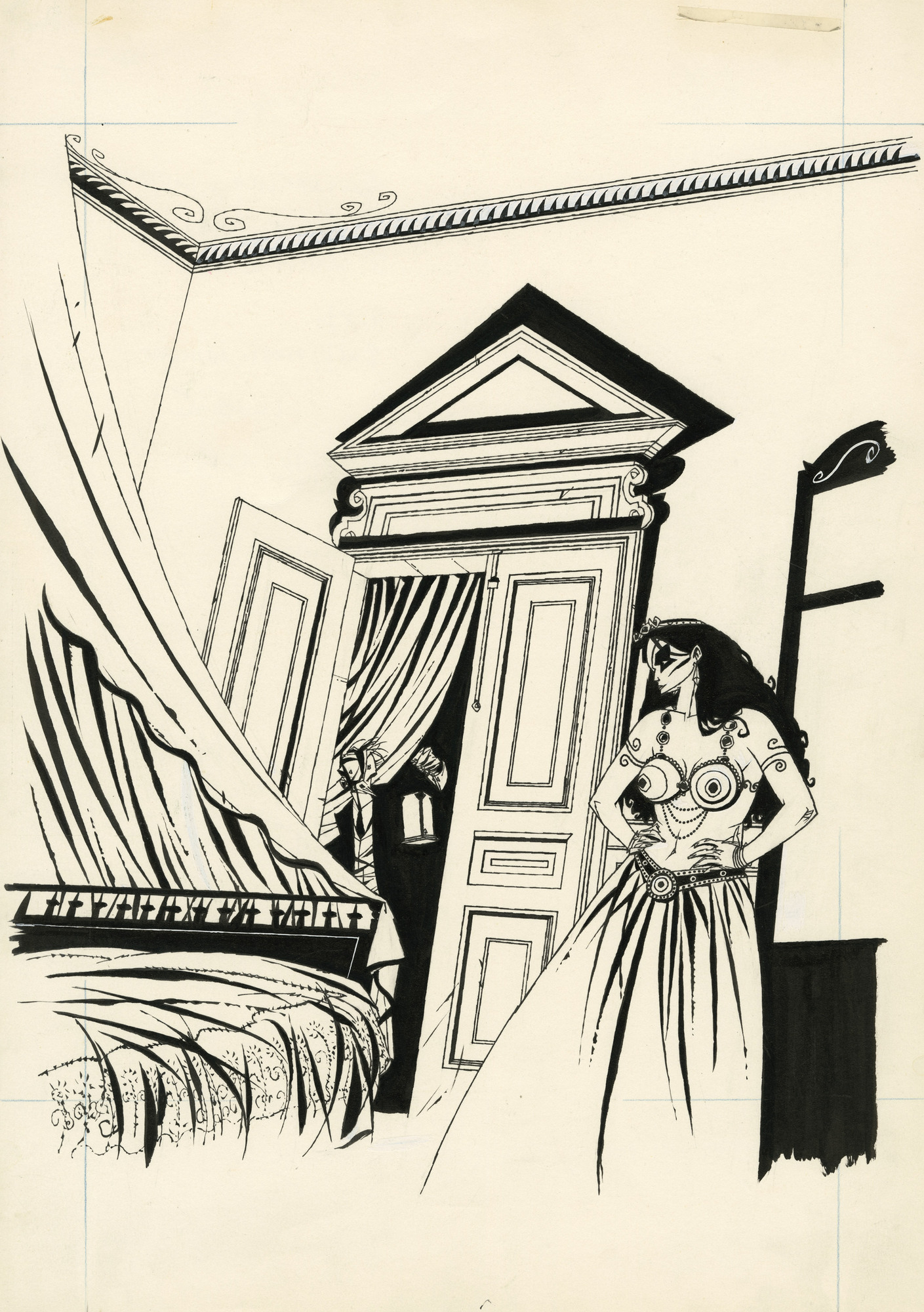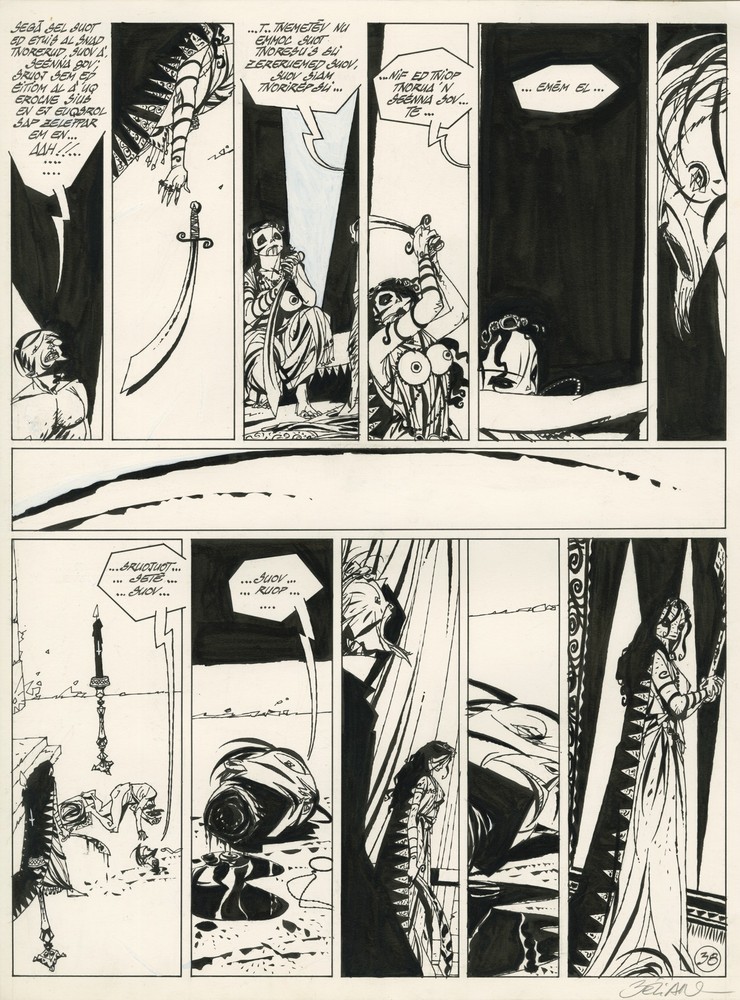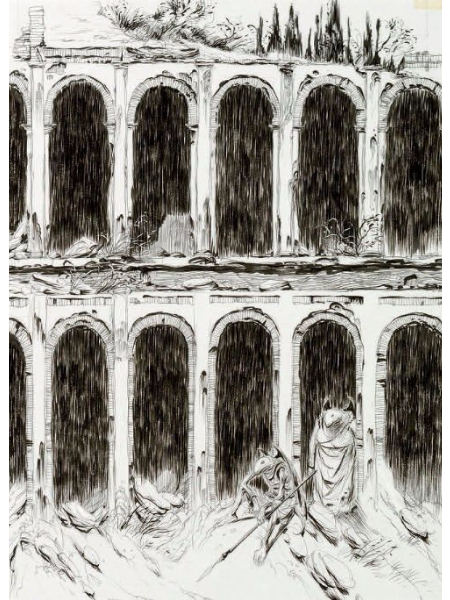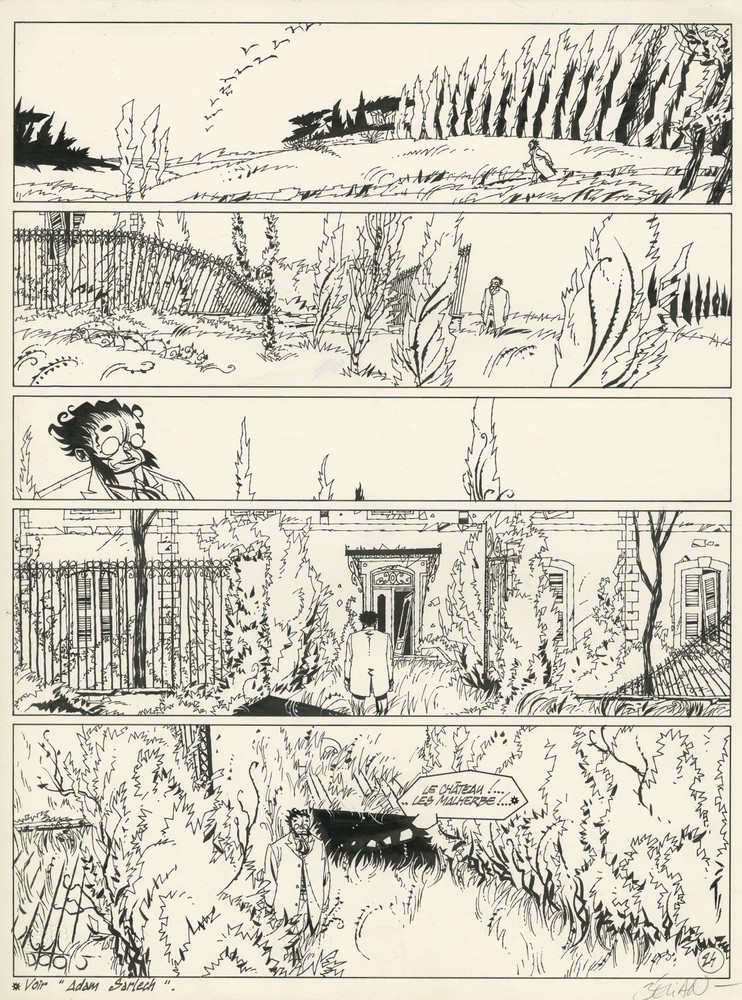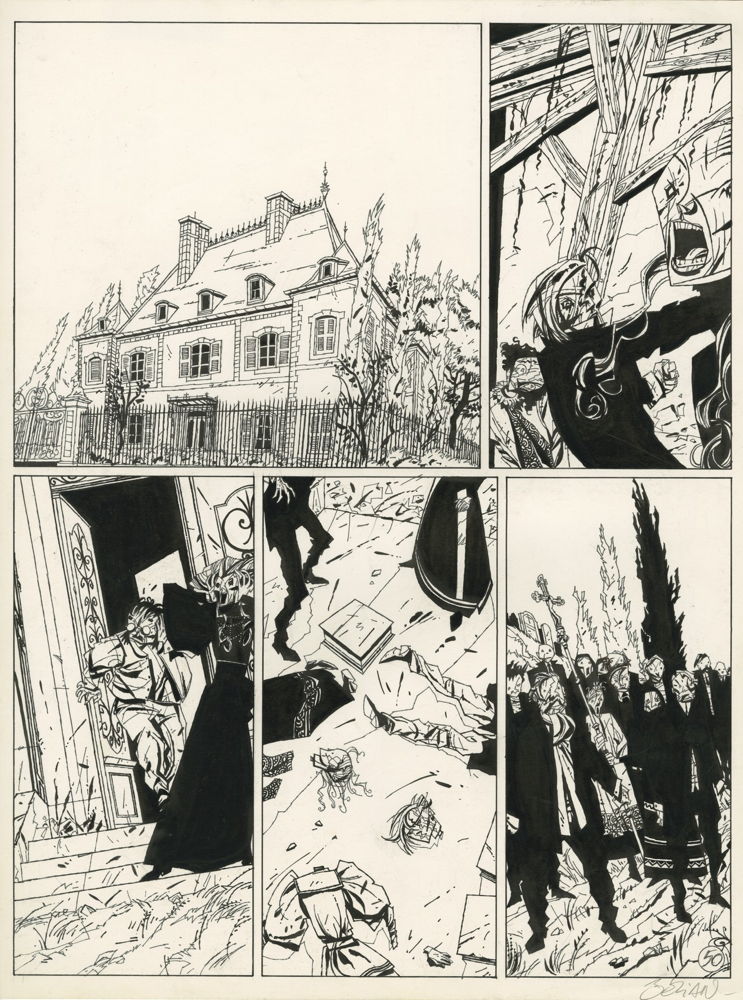Frédéric Bézian
Works selection
Biography
Born in Revel (FR) in 1960. Lives and works in Revel (FR).
Frédéric Bézian began his career publishing cartoons in fanzines in the 1970s, and from 1978 to 1981 he studied under Claude Renard at the Saint Luke Art Institute in Brussels. His first album, L'Étrange Nuit de Mr Korb, was published by Magic Strip in 1982 and was followed by Ginette, Martine et Josianne, with Futuropolis. Between 1983 and 1986, Bézian published a series of short stories in À suivre which later formed the album Totentanz. In 1989, he began the trilogy Adam Sarlech (published by Les Humanoïdes Associés) and the third album won the Bloody Mary prize at the Angoulême Festival in 1994. During the 1990s, Bézian worked for a variety of independent publishing houses such as Amok and P.M.J, exploring new graphic avenues. Around the same time, he was commissioned by Les Armateurs to work on the TV animation series Belphégor, for which he was to assume the role of artistic director. Between 2000 and 2003, he collaborated on various albums, contributed to German and Japanese magazines, and provided regular illustrations for the books section of the French daily Libération. Bézian returned to comic strip with the album Ne touchez à rien, published by Albin Michel in 2004, with a script by Noël Simsolo. He and Simsolo would also be working together on Docteur Radar (2014-2018). In January 2006, Bézian collaborated on a Monsters album in Joann Sfar and Lewis Trondheim's Dungeon (Donjon)series for Éditions Delcourt, for whom he also illustrated a remarkable adaptation of Steve Tesich's novel Karoo in 2019. In describing the imaginative world of Frédéric Bézian, we might well draw parallels with the works of Edgar Allan Poe, Franz Kafka and Oscar Wilde and with Expressionist German cinema.
